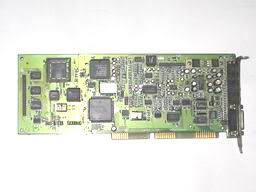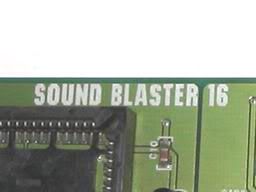The Sound Blaster 16....
Being a computer and technology enthusiast as far as I can remember, and realizing that I had tons of old PC components, gadgets and what not lying around the place, I decided to start a new series here in my blog about outmoded technology. I call this series Obsoletus Instrumentum - my virtual museum of obsolete technology. So, if you're a geek and miss the old days, this series is for you. My first post in this series is a about the sound card which broke the PC sound barrier - the Sound Blaster 16.
Obsoletus Instrumentum - The Sound Blaster 16
More often than not, unless we're hardcore gamers or audiophiles, we don't really pay much attention to our PC's sound systems. Nowadays, virtually all new PCs have sound capabilities, and most systems installed from the last five years or so have them as well, a fact that we sometimes take for granted.
This was a far cry from the time before the first desktop multimedia revolution took place in the early 90's. Then, during the heyday of the Intel 486, MS-DOS and Windows 3.1, sound was always an add-in option, never standard. The sound card of choice at the time was Creative Labs' Sound Blaster line. Yes, there were other sound card makers, but the Sound Blaster was the de facto standard. Other cards had to be Sound Blaster compatible, and that was all there is to it. Shown in the picture on the left is a Sound Blaster 16 sound card, circa 1995. It's actually still fully functional and was part of a multimedia kit which included speakers and a 4x CD-ROM drive. The sound card connects to the host PC via a full length 16-bit ISA slot, and features a built-in IDE port for the CD-ROM drive. This model was originally introduced in 1992 and was an update of its predecessor, the Sound Blaster Pro, released a year earlier. Compared to the Sound Blaster Pro, the Sound Blaster 16 had 16-bit sampling (hence the name) and support for daughterboards with wavetable synthesis complying with the General MIDI standard.
Shown in the picture on the left is a Sound Blaster 16 sound card, circa 1995. It's actually still fully functional and was part of a multimedia kit which included speakers and a 4x CD-ROM drive. The sound card connects to the host PC via a full length 16-bit ISA slot, and features a built-in IDE port for the CD-ROM drive. This model was originally introduced in 1992 and was an update of its predecessor, the Sound Blaster Pro, released a year earlier. Compared to the Sound Blaster Pro, the Sound Blaster 16 had 16-bit sampling (hence the name) and support for daughterboards with wavetable synthesis complying with the General MIDI standard. Already 13 years old, the Sound Blaster 16 is totally obsolete by today's standards, even though a number of them are probably still in use up to now. While it produces sound with very little frills, it was one of the most popular sound cards during it's time for its balance of reliability and compatibility. It was so popular, that it has been credited for breaking the sound barrier for PCs and starting the PC multimedia revolution. The Sound Blaster 16 was a huge success, and for a lot of us, it was our first encounter with PC sound.
Already 13 years old, the Sound Blaster 16 is totally obsolete by today's standards, even though a number of them are probably still in use up to now. While it produces sound with very little frills, it was one of the most popular sound cards during it's time for its balance of reliability and compatibility. It was so popular, that it has been credited for breaking the sound barrier for PCs and starting the PC multimedia revolution. The Sound Blaster 16 was a huge success, and for a lot of us, it was our first encounter with PC sound.
Today, its legacy as sound card of choice lives on in Creative Labs' latest offering, the state-of-the art Creative X-Fi.
Comments
my brother used to buy that one also just for playing DOS games.